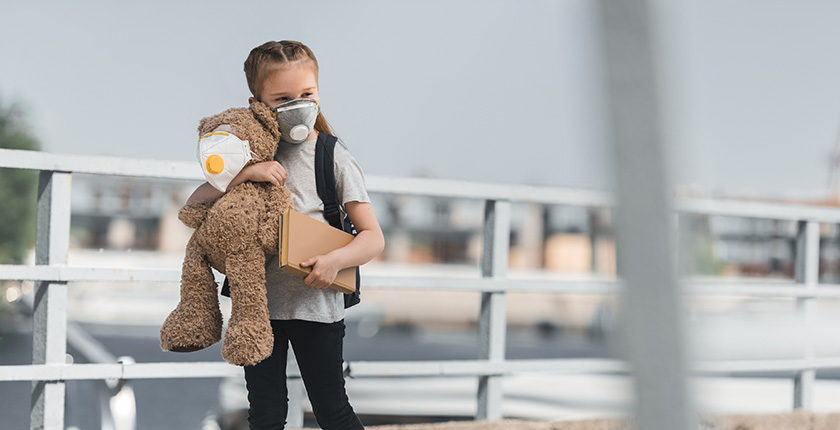
Photo: Balkan Green Energy News
At 15 locations in ten cities in Serbia, the average annual concentrations of PM2.5 particles, which are the most dangerous to human health, were higher than the defined limit in 2020. At 39 locations in 19 cities, the number of days with excessive concentrations of PM10 in the air was above the allowed level, according to the report on the state of air quality in Serbia issued by the Environmental Protection Agency (SEPA).
The report on the state of air quality in Serbia showed yet again that air pollution is huge throughout Serbia, which is why a protest was recently held in Belgrade.
The number of cities with excessive air pollution increased to 15 in 2020.
In Belgrade, Niš, Smederevo, Pančevo, Užice, Kosjerić, Valjevo, Kraljevo and Novi Pazar, the air was excessively polluted due to the presence of both PM10 and PM2.5 particles, and Bor had SO2 levels above the allowed limit.
PM10 caused excessive air pollution in Kragujevac, Zaječar, Popovac and Zrenjanin, and PM2.5 particles were dominant in Subotica, the report reads.
Dejan Lekić, a member of National Ecological Association (NEA) expert council and former assistant director at SEPA, has analyzed the report for Balkan Green Energy News.
As many as 15 locations in Serbia are more polluted than the most polluted city in the EU
Lekić compared Serbian cities with those in the EU. In June 2021, the European Environment Agency ranked the 323 cities in the EU by average annual concentrations of PM2.5, and Nowy Sacz in Poland recorded the worst result, 27.3 micrograms per cubic meter (μg/m3).
According to the EU, where average annual concentrations are above 25 μg/m3, air quality is classified as “very poor”. In Serbia, the limit in the decree on air quality requirements and monitoring is set at the same level.
15 locations in Serbia have worse results than Nowy Sacz, Lekić points out.
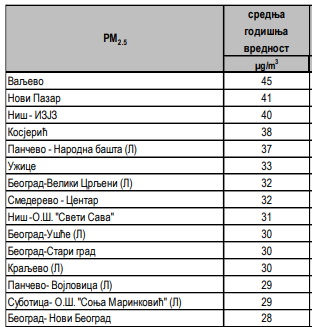
Suspended PM10 particles: citizens are systematically poisoned
With regard to the concentrations of PM10 particles, the report shows that at 17 of the 41 locations where the measurements are conducted, the defined limit for average annual concentrations of 40 µg/m3 has been exceeded, said Lekić.
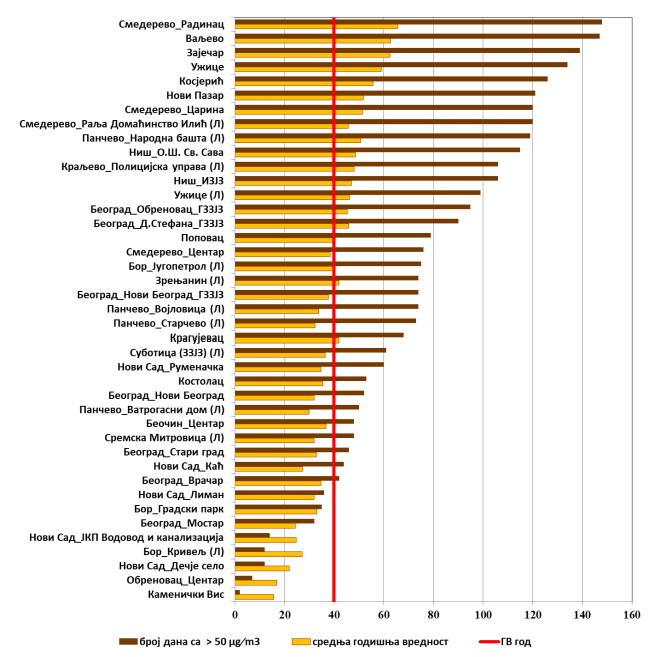
At the same time, the decree sets the allowed number of days with levels above limit at 35. Locations where the limit of 35 days has been exceeded are marked in red. A slightly paler color was used for those with a lower level of data availability than the legally prescribed 90%, but the findings are still sufficient for an indicative assessment.
Out of 46 measuring stations, only seven didn’t record breaches of the 35-day limit, he said.
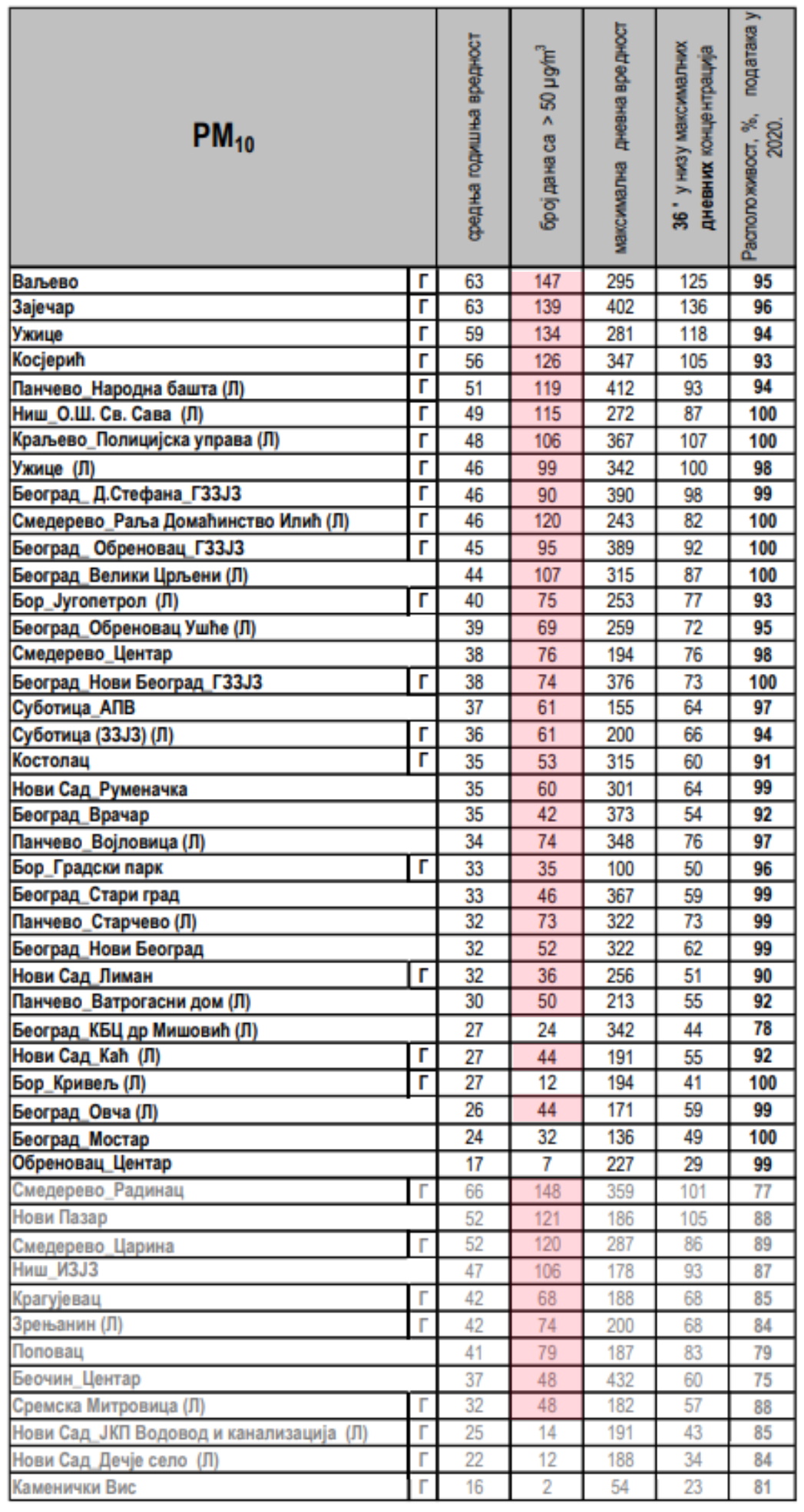
The defined limit was exceeded at most of the locations, meaning citizens are being systematically poisoned, Lekić said.
He added the authorities have known since 2018 of illegal levels of PM10 in the air but that they didn’t do anything about it.
Arsenic and cadmium in the air in Bor
At one location in Bor, the content of heavy metal arsenic inside PM10 particles exceeded the legal limit, reaching 277 nanograms per cubic meter (ng/m3). The defined maximum is six nanograms, which means the level was 46 times or 4,500% higher.
The concentration of cadmium at another location in Bor was 37 ng/m3 while the maximum allowed level is 5 ng/m3.
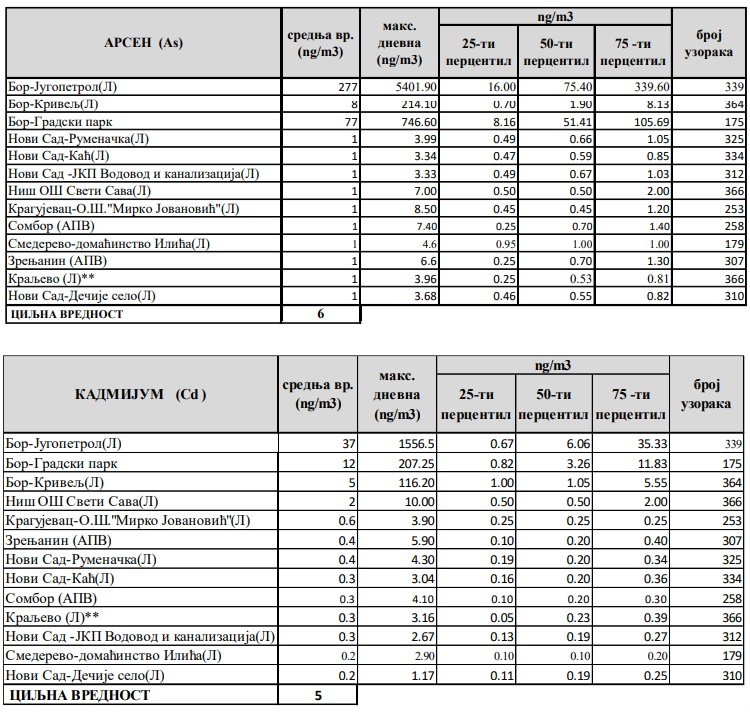
Citizens can avoid contact with water and soil that are contaminated with arsenic and cadmium, but here the two elements are found in the air, Lekić warned.
Why is the report half a year late?
Lekić points out the report was published by SEPA on September 13, with a delay of several months, as the legal deadline is February 28. He says it was late in previous years, too, as other entities authorized to monitor air quality that process the data didn’t deliver them in time.
Lekić also attributed this year’s delay to SEPA, noting that it reduced headcount in the department for air quality control over the past year and downgraded its status. The situation is related to the agency’s attempt to fire Milenko Jovanović, the department’s chief, he said.


















Be the first one to comment on this article.